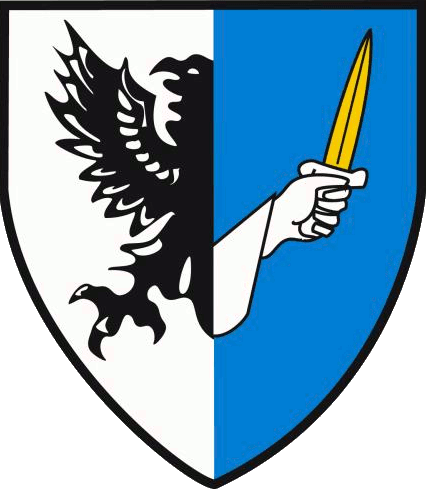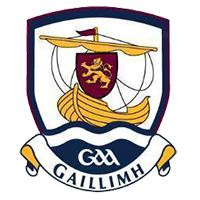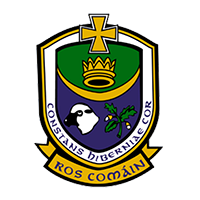A player requires many different skills to perform to his potential during a game situation. Not only does he/she need to be able to perform the underlying techniques of the game, but he/she needs to be able to employ them effectively at match tempo (Technical Proficiency). He/she also needs to be able to weigh up match situations and decide on the best option to take and when to take it (Tactical Prowess), and be able to anticipate the movements of his team-mates and synchronise with them during set play and general play (Team Play).
These skills should be developed in an integrated manner along with Physical Fitness, Psychological Focus and a knowledge and acceptance of the Playing Facts. in a balanced manner best suited to the requirements of the specific game.
Technical Proficiency
Technical Proficiency is the ability to perform the underlying techniques of the game accurately, consistently and at match tempo.
Gaelic games are among the most technically demanding games in the world. Hurling and Gaelic football stand apart from other sports as, to play the game well, all players – regardless of playing position – are required to master the techniques of the game.
Performing the techniques of Hurling and Gaelic football requires excellent hand-eye, eye-foot and hand-foot coordination. The best players are also able to perform the techniques using both sides of their body – their left and right hands and their left and right feet.
While most players will largely adhere to the principles which underpin proper technique, some will modify their style to suit their own make-up. This explains why there are an almost infinite number of possible variations of the accepted technique. Many factors influence the execution of any technique in a pressure situation; weather conditions, opposition, position on the pitch all influence how a player performs. These demands force players to modify their technique to suit the particular conditions. For this reason, it is important for coaches to determine whether any particular variation is basically sound or inherently weak as distinct from labelling anything as right or wrong or attempting to get every player to adhere to the “perfect” technique. The will also help avoid “paralysis from analysis” i.e. where the biomechanical aspects of technical performance are over-analysed.
Developing Technical Proficiency
Developing the techniques of Gaelic games requires practice. It is the role of the coach to ensure that the activities that take place during coaching sessions are pitched at an appropriate level – high enough to challenge a players’ technical ability, but not so high that the player does not have a realistic chance of success.
This is not an easy job for any coach, and even the most experienced coaches can get it wrong from time to time.
Activities to Develop Technical Proficiency
There are a number of different types of activity that can be used to develop Technical Proficiency, both on an individual and a collective basis. The most important element in developing Technical Proficiency is that players have the ability to perform the technique in game like situations. Traditional coaching focussed on the development of technique in an isolated environment prior to exposing players to external factors. However coaches that follow a Games Based approach to coaching ensure that players are exposed to different types of games, to develop techniques in an appropriate environment. While drills provide an organised structure for gradually developing technique, fun games and modified games should be organised in tandem with drills.
Ball and Wall activities
A (Hurling) wall, handball alley or any basic wall can provide for a range of different activities that a player can perform individually or in groups, often outside of structured coaching sessions. These activities develop Technical Proficiency by maximising the number of ball contacts in a training period, and as the only equipment required are a (Hurley), ball and a wall, they can be practiced in many places and at almost any time.
Technical Drills
Technical Drills focus on the performance of the underlying techniques of the game. There are 3 types of drill which require players to practice the techniques in progressively more challenging situations:
- Basic Drills
- Intermediate Drills
- Advanced Drills
Fun Games
Fun Games are activities which further help to develop Technical Proficiency, while exposing players to limited decision making (Tactical Prowess). From a Technical Proficiency point of view, Fun Games challenge the players to perform the technique in a variety of situations. Fun Games allow players to develop positional sense, but limit the type of opposition that players encounter as they continue to develop. Players must make decisions about where and when to move as in a real ‘game’ situation, and are encouraged to develop an awareness of space and time.
Fun Games help to develop the characteristics of Tactical Prowess and Team Play and, as such, should form a large portion of any coaching session.
Tactical Prowess
Tactical Prowess is the ability to weigh up match situations and decide on what option to take and when to take it – for example, to shoot for a score, carry the ball, pass it on or play it into space when in attack; or place the opposition under maximum pressure when defending.
Tactics are a set of plans designed to maximise your strengths or target an opponents weaknesses to gain an advantage in a match situation. Developing Tactical Prowess is about enabling your players to make good tactical decisions on the field of play.
A lot of emphasis is placed on developing the technical abilities of players – especially at younger ages. As the players develop and are exposed to more competitive situations, the coach should focus on the development of decision making and problem solving skills – developing the players Tactical Prowess.
In Hurling and Gaelic football it is rare that a player will have a prolonged period of time for this process to occur. Therefore the best way of developing a players’ decision making skills is to expose them to game situations in training.
Developing Tactical Prowess
Making good decisions on the field of play involves using a set of tactical skills that can be developed with good coaching. To develop tactical prowess, players need to have the ability to read the play or situation, develop the knowledge needed to make the correct tactical decision and apply their decision making skills to the on field situation.
Reading the game involves players using the skills of concentration, attention and perception. Players gather information using the senses of sight, sound, touch and their sense of place on the field. Perception involves the players gathering and interpreting this information. Players with good tactical prowess develop the skills to direct their attention to the important information and to eliminate information that is not relevant to the decision. It is possible to coach a player as to which clues to look out for in a game situation. Once a player knows what clues to look out for, it is possible to develop their attention and concentration skills
Activities to Develop Tactical Prowess
In order to develop Tactical Prowess, it is important that the players have the ability to perform the techniques of Hurling and Football. This will ensure that in any given match situation, the player will have the ability to perform any technique correctly. In analyzing any match situation there are two key questions to be asked:
- Did the player choose the correct technique to perform?
- Did the player perform the technique correctly?
If the player chose to perform the correct technique i.e. play the ball to a team mate first time instead of taking possession, but performed the technique incorrectly there may be a problem with that players Technical Proficiency. If the player chose to perform an incorrect technique for the situation that was facing him/her, (but performed the technique correctly) the player needs to develop their Tactical Prowess. In order to develop a players’ Tactical Prowess, there are a number of different types of activity that can be performed.
Game Play Routines
Game Play Routines involve placing players in a situation where they are forced to weigh up the choice of which skill to perform, and how to perform the skill in order to complete the drill. In this case, the players’ pattern of movement may or may not be restricted. Therefore, the player must adapt to the situation by being aware of his/her options, chose the correct option, and be technically proficient enough and physically fit enough to execute the option and recover in time for the next situation.
Game Play Routines train improvements in adapting technical proficiency to pressure situations and improving tactical awareness which are vital elements in ensuring a player is competent in a match situation. Game Play Routines are the essential link between the development of technical proficiency and being prepared to play in full game situations.
Team Play
Team Play is the ability to anticipate movements and synchronise who should go where during play or set-piece situations in order to score or convert possession into scores when in attack, or minimise the amount of clean possession and time and space available to opponents to make clear use of the ball, when defending.
Developing Team Play
Team Play is concerned with much more than simply positional play. Team Play refers to the combination play between team mates that can result in an increased chance of scoring when in possession, and reducing the chances of opponents scoring when not in possession.
Developing Team Play involves:
- Team Plans
- Anticipation
- Creating Space in Attack
- Denying Space in Defence
- Combination/Support Play
- Communication
Activities to Develop Team Play
Team Play is an extension of Tactical Prowess, with the two sets of skills intertwined. Where as to develop Tactical Prowess, the players develop their ability to read a game and decide on which action to take, Team Play is the ability to anticipate the actions of the other players on the field, and mould these actions into a game plan.
Team Play is developed using Game like situations, incorporating Modified Games, Small-Sided Games and Full Games.
Therefore the player must adapt to the situation before him/her by anticipating the movement of the ball, team mates and opponents, communicating effectively with team mates and providing support to team mates in possession. It is through the combination of each of these techniques that a team develops cohesive Team Play
Modified Games
Modified Games are practices that focus on different aspects of Team Play through games. They are often undertaken in a defined space. Many variations may be used, depending on the objective of the game, e.g. 2 v 1, 2 v 2, 3 v 2, 3 v 3.
Conditioned Games can be used to develop the ability to retain possession (passing sequences), to create or reduce space (3 v 2 etc) or to develop contact or reaction skills.
Modified Scoring Systems (e.g. target scores or time limits) and Modified Playing Rules (e.g. no solo, one bounce, fist pass only) can be used to focus on particular techniques or aspects of decision making.
Small sided games
Small Sided Games are an extension of fun games and grid games but are basically smaller versions of full games. Smaller numbers are used to ensure plenty of ball contact for all involved. Positions may be used but it is advisable to allow individual players to play in as many different positions as possible over time.
Games such as 7/9/11/13-a-side games provide players with the opportunity to encounter challenges similar to those found in full-sided games, however due to the smaller numbers and/ or restricted playing area, the number of times a player can be in possession, or contesting possession with an opponent is increased.
Full-sided games
Ultimately players train to play full-sided games. Once the earlier progressions have been achieved, it is vital that players prepare for full-sided games by playing full-sided 15-a-side games with players in appropriate positions.
Physical Fitness
Physical fitness is the ability to perform the basic techniques, engage in physical contests and responds to the signs, sounds and signals experienced during the game with the least possible expenditure of energy.
While this section specifically deals with physical fitness and conditioning, the importance of integrating skill development with physical fitness development cannot be over emphasised.
Physical Requirements of Gaelic games
The understanding of the physical fitness requirements of Gaelic games has changed dramatically over the last 15 years. Both Hurling and Gaelic football are games that require players to perform repeated short quick movements, moving in multiple directions and from a variety of starting positions, with varying amounts of recovery. The requirements for playing Gaelic games differ between Hurling and Gaelic football, and often between players in different positions. Therefore, Coaches should attempt to make the training programmes as relevant to each player as possible, taking into account the requirement for specific positional development.
In addition to running, players are also required to jump, catch, kick/strike, hand pass, tackle and use both sides of their bodies to excel at Gaelic games. Coaches must bear in mind that variations exist between the requirements for Hurling and Gaelic football, and between players playing in the different positions on the field.
Components of fitness
Success in conditioning will largely depend on how the components of fitness can be embedded into the coaching programme. There are a number of different components of fitness for Gaelic games.
Speed
Activities should focus on developing speed over intervals of between 5 and 20 seconds, ensuring that adequate recovery occurs between sprints. Activities designed to develop reaction time and acceleration using short sprints are appropriate.
Stamina (endurance)
Before the onset of puberty, it is common for many players to improve, often dramatically, based on the improvement in their movement skills. Aerobic levels can be developed in teenage players, incorporating a number of different types of activities. Due to the different developmental stages that players go through during their teenage years, it is possible to group players based on their development in order to develop their aerobic capacity.
Suppleness (flexibility)
Monitoring of flexibility is important amongst teenagers as, due to the large variations in the rate of growth, flexibility can be reduced if appropriate activities are not undertaken. Introducing dynamic flexibility activities into the warm up, and cool down portions of a coaching session serves to ensure that the muscles are stretched throughout their full range of motion.
Strength
Coaches should remember that the basis behind resistance training is to develop their muscular strength, power and endurance, not to lift ever larger weights, or to build larger muscles. Strength can be developed using:
- Body Weight activities
- Medicine Balls/Resistance Bands/Tubes
- Machine Weights
- Free Weights
Before the start of a Training Programme
Before starting a coaching programme for any group of players, it is always important to establish if there are any medical issues that the coach should be aware of. This is especially important when a new player or one who has not undertaken any sort of activity recently is involved. In this case, a simple medical screening questionnaire can be used in consultation with a medical professional. This may ensure that adequate medicines and provisions are available during training or matches, e.g., asthma inhaler etc.
Coaches should be mindful of each player’s level of fitness prior to beginning a training programme and attempt to be as specific to the requirements of each player as possible.
Playing Facts
Playing facts refers to the ability to identify playing strengths and areas where improvement is required, and to accept why changes in training, tactics, team line out etc may be required.
In Gaelic games, it is difficult, if not impossible, for coaches to notice and remember all the key events occurring within a training session or match, equipped only with their knowledge of sport and their powers of observation.
That’s where the relatively new discipline of the playing facts come in. The Playing Facts have developed rapidly over the last decade and has been facilitated by advances in IT resources available to coaches. This area is now acknowledged as an aid to performance enhancement at all levels. Essentially, the Playing Facts about creating a reliable record of performance by means of observations that can be analysed, with training programmes and team line ups adapted based on these observations.
The process of identifying the Playing Facts typically involves the coach identifying key factors to be studied within the game or training session and recorded. Depending on the time and technology available to coaches, this can be done manually – using paper and a pen – or using a variety of computer based analysis systems.
Why should a coach gather the Playing facts?
The Playing Facts are a very useful tool in the armoury of the Coach. The Playing Facts allow for an independent analysis of the performance within a game or training session. Specifically, the Playing Facts can be used to:
- Protect Players from the world of opinion
- Help Players stay in reality
- Give Players the right type of attention
- Help Players set realistic goals
- Increase motivation
- Depersonalise issues
The Process of gathering the Playing facts
The first step is to outline the possible events in a game and prioritise which to include in the analysis. This means defining the range of possible actions in the game and linking these actions with possible outcomes – for example a goalkeepers puck/kick out would constitute an action, with Won Clean, Lost Clean, Won Break, Lost Break, Free Won, Free Conceded the possible outcomes. In Gaelic games there are an almost infinite number of possible actions and outcomes ensuring that the coach must prioritise those which influence the game most. Therefore the Coach must limit the information being recorded to solely that information that will be of benefit.
Using these events and outcomes, it is possible to create a paper template – or an electronic template if using a software package – that the coach uses to analyse the game. Each time an action occurs in the game, the coach notes the action and the outcome.
By analysing all of the outcomes it may be possible to pinpoint areas that require adjustment within the team. This type of analysis enables the coach to create an objective statistical analysis of the match to use when giving feedback, whether that be during the game or in subsequent coaching sessions or team meetings.
What to do with the Playing facts?
It is important to be careful with how the data is presented since, in isolation, these can give a distorted impression of performance. Video footage is usually presented via television, although presentations on a computer enable much more flexibility when presenting information to players. Computer software (e.g. Power Point) can be used to enhance the visual information that players are shown, by highlighting key situations in the game and using these for feedback purposes.
Reducing the total amount of information presented to those that highlight the main objectives of the analysis is recommended, as large amounts of statistics can often be confusing for players and coaches. As well as this, statistics from categories that are too general may not be very informative (eg a chart showing the number of passes).
The Playing facts Process – a summary
Follow the diagram above to follow the Playing Facts process:
- A Game is played
- The Coach observes the game and analyses the performance
- During the game, changes or substitutions are made
- After the Game, the coach plans forthcoming coaching sessions to rectify issues highlighted within the Game.
- Coaching sessions take place, leading to
- Another Game
From here the process continues. Effective Communication is a crucial part of the process.
Psychological Focus
Psychological focus is the ability to maintain focus on the here and now and switch concentration as the need arises.
It is often referred to by a variety of other names, for example, bottle, heart, hunger, killer instinct, mental toughness, single mindedness, will power and will-to-win.
It involves players being able to maintain attention on the here-and-now and switch concentration from task to task as the need arises. Players who are competent, confident and who are committed to achieving their full potential will be best able to retain focus and maintain their composure and competitiveness. The more they undertake a balanced training programme – based on the 3 T’s and 3 P’s – the more successful they will be in this regard.
There are a number of strategies that can be used to achieve an even greater level of bonding and cohesion among members of a team panel. These include: use of team uniforms, social outings or team building weekends. Given the differing personality types involved and the range of thoughts and emotions, which they experience across situations, and, at various stages of their development, fluctuations in focus are inevitable. This helps to explain why some players:
- try harder than others when they are losing.
- strive to prove doubters and knockers wrong
- throw caution to the wind when the odds are stacked against them.
- allow themselves to be carried away when the team wins. Players who are not used to winning are most vulnerable in this regard. (They usually come back to earth in their next game).
- who experience little competitive pressure when they are young, become more vulnerable as they grow older, and vice-versa.
What makes this area so intriguing is that different players respond in different ways. Indeed the same player will often respond in different ways when presented with the same circumstances.
Competitive stress
While competitive pressure can help to arouse players, it can also overwhelm them with the result that they sometimes, choke, freeze or even lose the head. The fears, doubts, worries, anger, insecurities or nerves which trigger such responses are most likely to impact when players lack belief in their own ability. Apart from further diminishing self-belief, these distractions can undermine their level of commitment, too. The anxiety triggered by competitive pressure may physically reflect itself in butterflies in the stomach, cramps, diarrhoea, sweaty palms, dry mouth and racing heartbeat. In terms of behaviour, players may find it hard to eat or over-eat, yawn a lot or tap their feet.
Loss of focus can be triggered, and fuelled, by any one or a combination of internal disruptions or external distractions. These include the following:
- Internal Disruptions
- Negative Perceptions/self-Talk
Players convince themselves that they are not good enough for the task at hand, are self-conscious about their lack of fitness or their opponents perceived superiority etc. Alternatively, players may experience an exaggerated sense of superiority, which can, in turn, lead to complacency.
Mistakes/guilt
Players question their ability when they take the wrong option, lose possession, miss a scoring opportunity, concede an easy score or feel guilty about not doing enough during games or in training etc.
Poor coping Mechanisms/self-deception
When things are not going well for Players, they sometimes resort to the use of negative coping mechanisms, for example, complaining, making excuses, denying problems, blaming others or generalising from one problem to another. The more important the game or uncertain the outcome, the more likely it is that distractions will be magnified and attention will be deflected away from the task at hand. The more ingrained these responses become, the harder they are to change and the more likely they are to surface.
Losing
Players get dejected when the opposition has the upper hand or when the team is trailing or the lead is being whittled away. The more they lose, the more pessimistic and defeatist in attitude they become. This is sometimes referred to as learned helplessness or as a sort of self-fulfilling prophecy. First we make our expectations then they make us.
External Disruptions
Intimidation
Players are intimidated by physical or verbal provocation or by opponents who engage in gamesmanship, for example, who feign a foul or an injury or who simply waste time.
Match officials
Players get irritated when a match official makes what they perceive to be a poor or biased decision.
Spectators
Players get annoyed when spectators become abusive.
Lifestyle
Players lead an unbalanced lifestyle attempting to cram in as much as possible or burn the candle from both ends. (They should endeavour to get 8 hours continuous sleep each night). Players who lose focus can sometimes trigger a chain reaction, which culminates in a breakdown of team cohesion, also. There are a variety of routines, which can be used by players to maintain psychological focus. These are usually classified on the basis of being mind-to-body or body-to-mind techniques depending on whether relaxation is achieved primarily through the mind or the body.
Developing Psychological Focus
Mind Body Techniques
- Mental Rehearsal or Motor Imagery (MR): players learn to generate mental images of performance and rehearsing images of activities likely to occur during competition.
- Cognitive Stress Management: stress management techniques designed to alleviate the stress bought on by worries, fears and negative self-statements. Players can often talk to themselves in attempt to build up confidence and to convince themselves that they can be successful.
Body Mind Techniques
- Centering: a breathing technique in which players learn to consciously relax starting from head to toe. Players inhale deeply and control their breathing when exhaling
- Progressive Muscular Relaxation Training (P.R.T): is a much more elaborate and time-consuming relaxation procedure. It is based on the principle of feeling muscular tension. Players tense the each muscle group in succession which leads to a more pronounced relaxation of the muscles and this helps players to recognize the feeling of relaxation in a particular muscle group.






